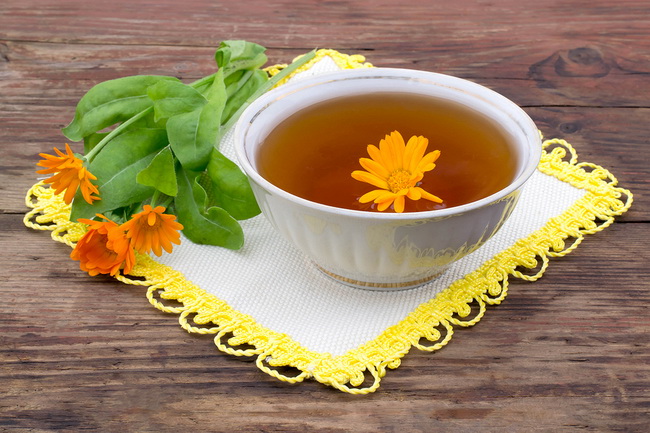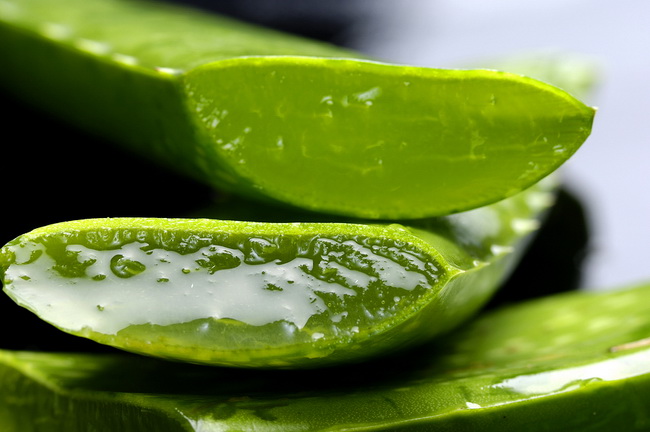- Make It Yourself Lavender Heart-Shaped Bath Bombs!
- 20 Things You Never Knew About “Down There”
- 12 Best Foods For Those Suffering From Arthritis Pain
- 12 Personal Hygiene Mistakes Almost Everyone Makes (Mom Never Told You About #4!)
- 15 Medicinal Plants And Herbs From The Cherokee People
- 12 Mind-Blowing Benefits Of Drinking Coconut Water During Pregnancy
- 12 Outstanding Winter Foods That Won’t Fatten You Up Like A Christmas Turkey
How To Treat An Infection Of Your Innie Or Outie (Especially After Piercing!)

Photo credit: bigstock.com
An infection of your belly button, whether you have an innie or an outie, is a much more common problem than you might think. These infections can affect anyone, even infants! It is much more common, lately, among 15 to 25-year-olds because of the popularity of belly button piercings.
These infections can be either bacterial (which is common for piercings) or a yeast infection, which is common for those with “innie” belly buttons. The belly button can be a deep, dark, dank place where sweat and moisture love to accumulate. Think about it: When was the last time you cleaned out your belly button?
Common symptoms of an infection are a red belly button or surrounding area, mild burning pain, and/or a green or grayish discharge. Belly button infections can occur from poor hygiene, surgery involving the belly button, piercings, diabetes, obesity, and even exposure to the harmful UV rays of the sun.
Regardless of the root cause, there are plenty of home remedies that can treat this problem without a trip to the doctor. We have rounded up 12 ways that you can deal with an infected innie or outie. We also have a list of a few preventative measures you can take.
Keep reading so that you can take good care of your belly button, no matter which type you have!
1. Witch Hazel
Witch hazel is really an easy and inexpensive way to deal with infections. It will not only reduce the pain and inflammation, but it will help it to heal more quickly. Mix equal parts of witch hazel and water in a spray bottle, and spray your belly button area thoroughly. You can also take a cotton ball that has been soaked in witch hazel and rub it around the infected area.
2. Warm Salt Water
Salt water is another cheap yet effective way to clear up belly button infections. Warm water will help increase blood flow to the area, and the salt will also help to absorb excess moisture from inside the belly button area. Salt is also a terrific disinfectant. To use this method, simply add one teaspoon of salt water to one cup of warm water, and mix it well until the salt dissolves completely. Saturated a cotton ball in this mixture and clean the infected area. Pat dry carefully, taking care not to tear the delicate skin.
3. Eucalyptus Oil
Eucalyptus oil has powerful anti-inflammatory and antimicrobial compounds that are effective when fighting bacterial infections. In fact, eucalyptus oil is so powerful, it works well against antibiotic-resistant types of bacteria! Dilute about two drops of eucalyptus oil in one teaspoon of coconut or olive oil and apply to the infected area. Leave on overnight, then wash and dry the next morning. Repeat until the infection is gone.
Continue to Page 2

Photo credit: bigstock.com
4. Neem Oil
The great thing about neem oil is that it works well on both bacterial infections and yeast infections. Neem, sometimes called Indian Lilac, has anti-inflammatory and antiseptic compounds that can help with the itching, burning, and it can even prevent this infection from spreading. You can make a paste from dried neem leaves and apply it to the infected area, or add two drops of neem oil to a tablespoon of coconut oil or olive oil and apply it to the belly button area and allow it to sit overnight.
5. Think Clean And Dry
In order to encourage healing and prevent the yeast or bacteria from growing, you need to keep the area both clean and dry. Simply wash your belly button with soap and hot water when you take a shower. Later, dry out the area with a towel or cotton ball. Avoid using creams or lotions which can clog pores. If you want to keep the area moisturized, or try some coconut oil!
6. Calendula
Calendula (sometimes called marigold) has anti-inflammatory and antiseptic compounds, but it is also super hydrating, which can go a long way towards soothing the itching and irritation that often comes with infected belly buttons. Calendula will also encourage healing. You can crush two or three fresh calendula flowers and extract the juice and apply it to the area twice a day. Alternately, if you can’t find fresh calendula flowers, use a lotion or ointment that contains calendula and apply as directed.
Continue to Page 3

Photo credit: bigstock.com
7. Tea Tree Oil
This oil is perhaps the king of antibacterial essential oils. This oil also has antifungal and antiseptic properties, so you cannot go wrong with tea tree oil. This essential oil is very powerful, so you will need to dilute it. Mix four drops of tea tree oil in one teaspoon of coconut oil or olive oil then use a cotton ball to apply it to the affected area. Leave this solution on the area for 30 minutes to one hour, and then wipe it off with a soft cloth. Repeat twice each day for best results.
8. Turmeric
The super anti-inflammatory of the spice world! Turmeric also has antibiotic and antiseptic compounds that can fight infections as well as keep them from happening again. Make a paste with a bit of turmeric powder and water, and apply it to your belly button. Allow this solution to dry completely, and then wipe off the excess with a dry cloth. Repeat twice a day to prevent the infection from spreading and to reduce the pain and redness. You can also consume turmeric to fight infections from the inside out. Mix one tablespoon of turmeric powder in one glass of milk or juice and drink once each day.
9. Rubbing Alcohol
This might burn like the dickens, but rubbing alcohol will kill the infections quickly. After the burning subsides, you should have considerable relief from the pain and irritation. Simply soak a cotton ball in some rubbing alcohol and apply it to the infected area. Repeat twice a day for best results. This method can also dry out your skin, so apply a bit of coconut oil to the area to keep it moisturized.
Continue to Page 4

Photo credit: bigstock.com
10. Aloe Vera
You know that aloe vera is good for your skin wounds and burns, but did you now that it can fight infections? Aloe vera has anti-inflammatory compounds that will moisturize and heal your infection. It can ease pain as well. If you have an aloe vera plant, simply cut off a leaf and extract the gel. Then apply this gel to the affected area and allow it to dry. After it dries, you can rub off the excess with a cloth or wash and dry the area. Repeat twice a day for best results.
SEE ALSO: 12 Natural Ways to Treat a Staph Infection (#11 is Crazy!)
11. White Vinegar
The acidic nature of white vinegar fights infections and keeps them from spreading further. This is another inexpensive but effective method that works surprisingly well. Mix one part plain white vinegar with two parts warm water. Soak a cotton ball in this mixture and apply it to your belly button, or place it in a spray bottle and spray the area thoroughly. Let it work for 15 to 20 minutes, then rinse with clear water and dry well. Repeat twice a day.
12. Colloidal Silver
Since nothing can live inside or in the presence of silver, this ancient remedy can kill an infection in hours. Many people consume a bit of colloidal silver every day to stop infections from ever getting a foothold in their bodies, but you can also apply colloidal silver directly to your belly button to kill the infection and encourage quick healing. Silver is so well known for fighting infection that many hospitals sell bandages infused with silver!
Extra Tips:
- Avoid chlorine pools or hot tubs as this chemical is not good for your infection
- Do not pick or scratch at your belly button as you can spread the infection
- Get blood sugar levels under control to help prevent infections
- Add garlic to your diet, as this herb helps to stop infections
- Avoid touching your belly button, unless you are applying a healing solution, as you can spread this infection further or make it worse
- Always wash your hands both before and after touching your infection
- Eat foods rich in vitamin C (such as citrus fruits) and zinc (such as sunflower seeds) to encourage healing
If your infection gets worse or does not appear to be getting better after seven days, consult with your physician.
References:
































